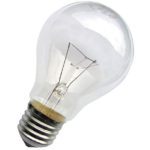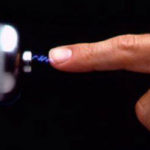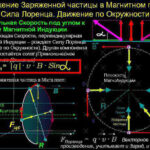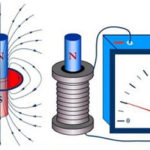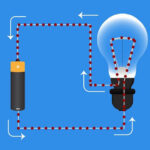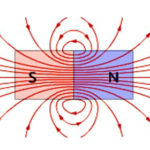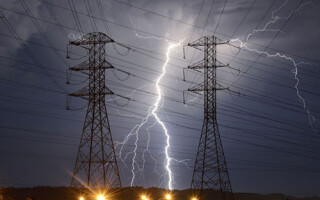Electricity is a common and vital phenomenon for most people. And like any familiar thing, it is rarely noticed. Few people wonder where it comes from, how it works, and what can be done with it. However, its study was engaged long before our era and still some mysteries remain unanswered.
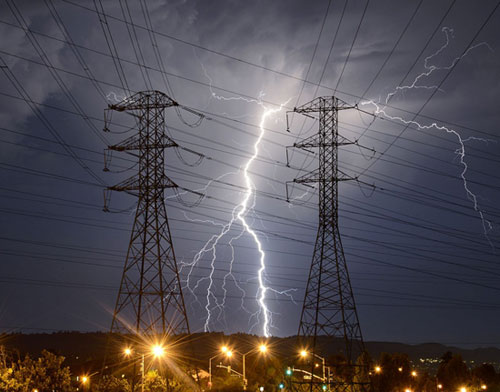
Contents
What is meant by an electric current
Electricity is a complex of phenomena associated with the existence of electric charges. This word most often refers to the electric current and all the processes that it causes.
Electric current is the directional movement of particles carrying a charge under the influence of an electric field.
Who invented electricity - history
Particular manifestations of electricity were studied long before our era. But combining them into one theory to explain lightning flashes in the sky, the attraction of objects, the ability to cause fires and numb body parts, or even human death, has proven to be no easy task.

Scientists have studied the three manifestations of electricity since ancient times:
- Fish producing electricity;
- Static electricity.;
- Magnetism.
In ancient Egypt, healers knew about the strange abilities of the Nile catfish and tried to use it to treat headaches and other diseases. Ancient Roman doctors used the electric stingray for similar purposes. The ancient Greeks studied in detail the strange abilities of the stingray and knew that the creature could stun a man without direct contact through a trident and fishing nets.
Somewhat earlier, it was discovered that if you rub amber on a piece of wool, it will begin to attract wool and small objects. Another material with similar properties, tourmaline, was later discovered.
Around 500 BC. Indian and Arabian scientists knew about substances capable of attracting iron and actively used this ability in various fields. Around 100 B.C., Chinese scientists invented the magnetic compass.
In 1600, William Gilbert, the court physician to Elizabeth I and James I, discovered that the entire planet was one huge compass and introduced the concept of "electricity" (from the Greek "amber"). In his writings, the experiments of rubbing amber on wool and the compass' ability to point north began to combine into one theory. In the picture below, he demonstrates the magnet to Elizabeth I.
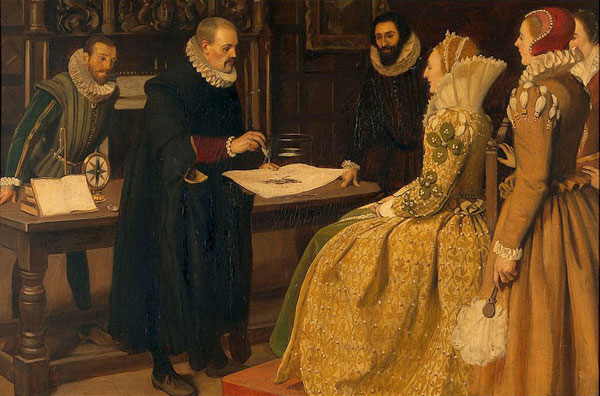
In 1633, the engineer Otto von Guericke invents the electrostatic machine, which can not only attract but also repel objects, and in 1745 Peter van Musschenbroek constructs the world's first electrical charge accumulator.
In 1800, Italian Alessandro Volta invents the first power supply - an electric battery that generates direct current. He was also able to transmit electric current over a distance. Therefore, this year is considered by many to be the year of the invention of electricity.
In 1831 Mike Faraday discovered the phenomenon of electromagnetic induction and opened the way for the invention of various devices based on electric current.

At the turn of the nineteenth and twentieth centuries a great number of discoveries and advances are made thanks to the work of Nikola Tesla. Among others, he invented the high-frequency generator and the transformerthe electric motor, the antenna for radio signals.
The science of electricity
Electricity is a natural phenomenon. It is partly studied in biology, chemistry, and physics. Electric charges are most fully considered within the framework of electrodynamics, one of the branches of physics.
Theories and laws of electricity
The laws to which electricity obeys are few, but they fully describe the phenomenon:
- The law of conservation of energy is the fundamental law to which electrical phenomena also obey;
- Ohm's law is the basic law of electric current;
- The law of electromagnetic induction - about electromagnetic and magnetic fields;
- Ampere's law - about the interaction of two conductors with currents;
- Joule-Lenz law - about the heat effect of electricity;
- Coulomb's law - about electrostatics;
- Right and Left Hand Rules - determining directions of magnetic field lines of force and Ampere force acting on a conductor in a magnetic field;
- Lenz's rule - determining the direction of induction current;
- Faraday's Laws - about electrolysis.
The first experiments with electricity
The first experiments with electricity were mainly of an entertaining nature. Their essence was light objects that attracted and repelled under the action of a poorly understood force. Another entertaining experience was the transmission of electricity through a chain of people holding hands. The physiological effects of electricity were actively studied by Jean Nollet, who made an electric charge pass through 180 people.
What an electric current consists of
Electric current is the directed or ordered movement of charged particles (electrons, ions). Such particles are called electric charge carriers. For motion to occur, there must be free charged particles in matter. The ability of charged particles to move in a substance determines the conductivity of that substance. By conductivity, substances are distinguished into conductors, semiconductors, dielectrics, and insulators.
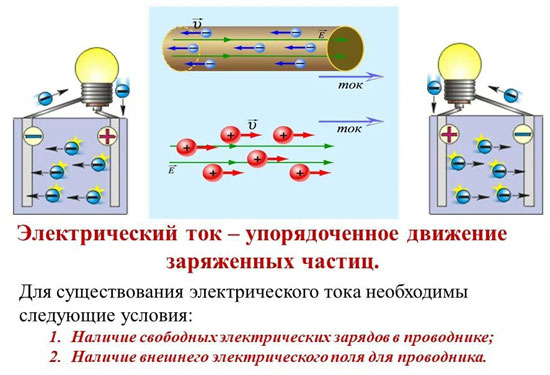
In metals, the charge is moved by electrons. The matter itself does not leak out - metal ions are firmly fixed in the nodes of the structure and only slightly fluctuate.
In liquids, ions carry the charge: positively charged cations and negatively charged anions. The particles rush to the electrodes with the opposite charge, where they become neutral and settle down.
In gases, plasma is formed under the action of forces with different potentials. The charge is carried by free electrons and ions of both poles.
In semiconductors, the charge is carried by electrons, moving from atom to atom and leaving behind discontinuities that are considered positively charged.
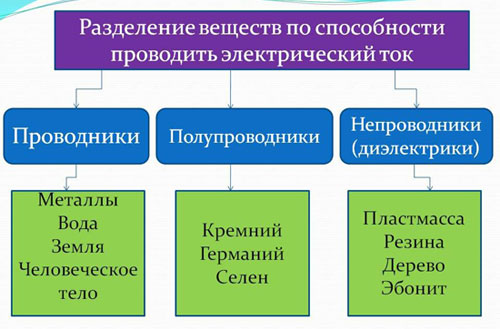
Where electric current comes from
Electricity flowing through wires into homes is generated by an electric generator in various power plants. In these, the generator is connected to a constantly rotating turbine.
In the design of a generator has a rotor, a coil, which is placed between the poles of a magnet. When the turbine rotates this rotor in the magnetic field, according to the laws of physics, an electric current appears or is induced. Thus, the purpose of the generator is to convert the kinetic force of rotation into electricity.
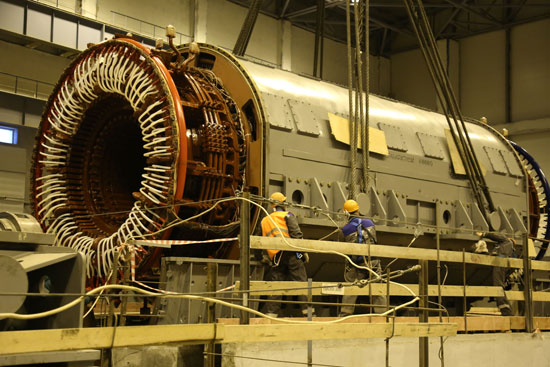
You can make a turbine spin in many ways, using a variety of energy sources. They are divided into three types:
- Renewable - energy derived from inexhaustible resources: streams of water, sunlight, wind, geothermal sources, and biofuels;
- Non-renewable - energy derived from resources that emerge very slowly, incommensurate with the rate of consumption: coal, oil, peat, natural gas;
- Nuclear - energy derived from the process of nuclear fission of cells.
Electricity is most often generated through the operation of:
- Hydroelectric Power Plants (HPPs) - are built on rivers and use the force of water flow;
- Thermal power plants (TPPs) - run on thermal energy from burning fuel;
- Nuclear power plants (NPPs) operate on thermal energy derived from the nuclear reaction process.
The transformed energy flows through wires to transformer substations and switchgears, and then it reaches the end consumer.
Nowadays, the so-called alternative types of energy are actively developing. These include wind turbines, solar panels, the use of geothermal sources and any other ways to obtain electricity through unusual phenomena. Alternative energy is strongly inferior to the performance and payback of traditional sources, but in certain situations help to save money and reduce the burden on the main power grids.
There's also the myth of the existence of BTGS - Fuelless generators. There are videos on the Internet demonstrating their work and offering to sell them. But there is a big debate about the reliability of this information.
Types of electricity in the nature
The simplest example of electricity arising naturally is lightning. Water particles in clouds are constantly colliding with each other, becoming positively or negatively charged. The lighter, positively charged particles end up at the top of the cloud, while the heavier, negative ones move down. When two such clouds are close enough apart, but at different heights, the positive charges of one are mutually attracted by the negative particles of the other. This is when lightning occurs. This phenomenon also occurs between the clouds and the earth's surface itself.
Another manifestation of electricity in nature is the special organs of fish, rays and eels. They can use them to create electric charges to defend themselves against predators or to stun their victims. Their potential ranges from very weak discharges, invisible to humans, to deadly ones. Some fish create a weak electric field around themselves to help them look for prey and navigate in murky water. Any physical object distorts it in one way or another, which helps to recreate the surrounding space and "see" without eyes.
Electricity also manifests itself in the nervous system of living organisms. The nerve impulse transmits information from one cell to another, allowing you to respond to external and internal stimuli, think and control your movements.
Related articles:
